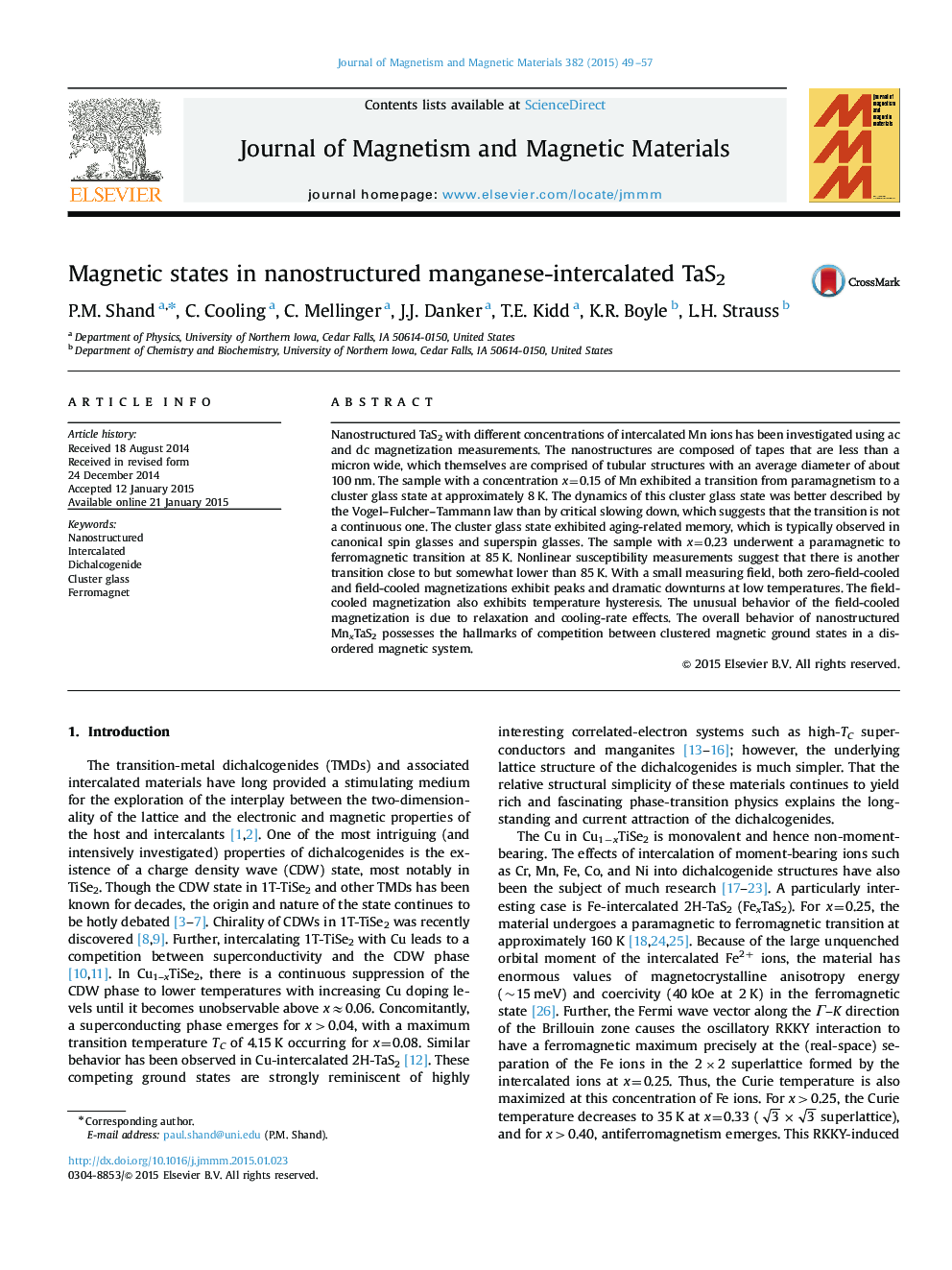| Article ID | Journal | Published Year | Pages | File Type |
|---|---|---|---|---|
| 1799223 | Journal of Magnetism and Magnetic Materials | 2015 | 9 Pages |
•Magnetic properties of Mn-intercalated TaS2 nanostructures have been measured.•Nanostructured Mn0.15TaS2 resembles a superspin glass at low temperatures.•Field-cooled magnetization of nanostructured Mn0.23TaS2 shows unusual behavior.•Nanostructured Mn0.23TaS2 may undergo two transitions close in temperature.
Nanostructured TaS2 with different concentrations of intercalated Mn ions has been investigated using ac and dc magnetization measurements. The nanostructures are composed of tapes that are less than a micron wide, which themselves are comprised of tubular structures with an average diameter of about 100 nm. The sample with a concentration x=0.15 of Mn exhibited a transition from paramagnetism to a cluster glass state at approximately 8 K. The dynamics of this cluster glass state was better described by the Vogel–Fulcher–Tammann law than by critical slowing down, which suggests that the transition is not a continuous one. The cluster glass state exhibited aging-related memory, which is typically observed in canonical spin glasses and superspin glasses. The sample with x=0.23 underwent a paramagnetic to ferromagnetic transition at 85 K. Nonlinear susceptibility measurements suggest that there is another transition close to but somewhat lower than 85 K. With a small measuring field, both zero-field-cooled and field-cooled magnetizations exhibit peaks and dramatic downturns at low temperatures. The field-cooled magnetization also exhibits temperature hysteresis. The unusual behavior of the field-cooled magnetization is due to relaxation and cooling-rate effects. The overall behavior of nanostructured MnxTaS2 possesses the hallmarks of competition between clustered magnetic ground states in a disordered magnetic system.
